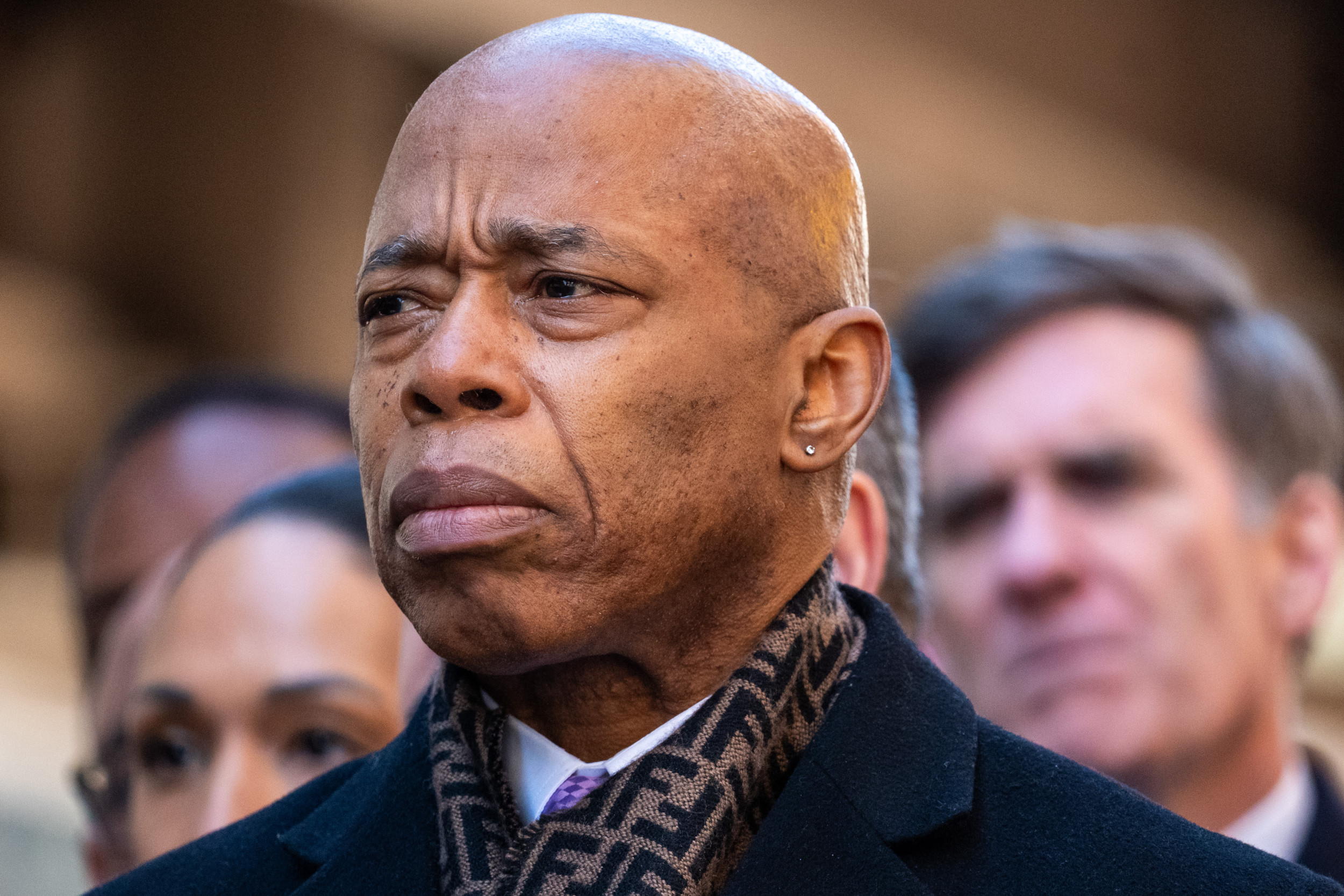The effort to get Americans vaccinated has been "extremely poor" and hampered by avoidable setbacks, experts have told Newsweek. However, some states, like West Virginia and North Dakota, have emerged as relative outliers as the country struggles to hit targets.
Thanks in part to Operation Warp Speed, the Trump administration's COVID vaccine and treatment funding program, vaccines have been developed in record time, and distribution has gone relatively well, according to academics. But the country has tripped up at arguably the most important hurdle: administering the shots that will protect people from COVID.
Missed targets
The Trump administration aims to deliver 300 million COVID vaccine doses. But targets have been missed, including getting 20 million people vaccinated by the end of 2020. The milestone of vaccinating 50 million people before February now looms.
On Tuesday, 38 million COVID vaccine doses had been made available to states, according to Health Secretary Alex Azar. He said he hoped for inoculations to rise from 700,000 per day to 1 million per day in a week to 10 days.
As of Thursday morning, 11.1 million vaccine doses of the 30.6 million distributed in the U.S. had been administered, the Centers for Disease Control and Prevention (CDC) website showed.
That means 63 percent of distributed COVID vaccines remained unused amid a pandemic where the U.S. has had the world's highest case count and death toll for months. COVID has so far killed almost 389,000 people in the U.S., with the CDC forecasting fatalities could hit 477,000 by early February.
Tinglong Dai, professor of operations management and healthcare analytics at Johns Hopkins University Carey Business School, told Newsweek: "While doses are trapped in warehouses and freezers, we are still experiencing record levels of infections and death."
In contrast to Israel, which leads the world in COVID vaccinations by inoculating almost 25 out of every 100 people, the U.S. has given shots to 3 per 100 people, according to Our World in Data.
"A profound disappointment, but not a surprise"
In an interview with Newsweek last week, National Institute of Allergy and Infectious Diseases director Anthony Fauci partly blamed the "hiccups" on the holiday season and the inherent difficulties of getting a "massive vaccine program started." Azar has made similar comments.
However, when Newsweek asked other experts about the state of vaccine roll-out in the U.S., they laid the blame elsewhere, and did not mince their words when expressing their frustrations.
Professor Stephen E. Flynn, founding director of the Global Resilience Institute at Northeastern University, said: "Planning matters. National leadership matters. A strong public healthcare system matters. The United States has lacked all three."
William Moss, director of the International Vaccine Access Center Executive at the Johns Hopkins Bloomberg School of Public Health, said: "The COVID-19 vaccine roll-out has been much slower than needed in the midst of a terrible pandemic and needs to be urgently scaled-up."
"Extremely poor," was the phrase used by both Nada R. Sanders, distinguished professor of supply chain management at Northeastern University, and Tim Ford, professor and chair in biomedical and nutritional Sciences at the University of Massachusetts.
Dr. Harry J Heiman, clinical associate professor at the School of Public Health at Georgia State University, said the situation was "a profound disappointment, but not a surprise."
While the Trump administration invested "significant resources into vaccine development," it failed to give states the operational guidance and support, including the money needed to ramp up infrastructure, systems, and the number of workers needed to provide shots. State health officials, for instance, asked for $8.4 billion to fund the vaccine roll-out, but have so far received $350 million.
"States, as a result, have been left on their own, with overall poor outcomes, but significant variation based on state-level leadership and the strength or weakness of their existing public health and health care systems," he said.
Dai pinned more of the blame on leaders at a state level. "It is state and local leadership that really matters. A shocking lack of advance planning at the local level is behind much of the mess we're witnessing," he said.
To complicate matters further, said Heiman, states are dealing with surging COVID cases, hospitalizations, and deaths, meaning health care systems needed to give vaccines "are already overwhelmed trying to manage the surge in the pandemic."
According to Julie Kalabalik-Hoganson, associate professor of pharmacy practice at Fairleigh Dickinson University, School of Pharmacy and Health Sciences, such failures mean people in some parts of the country do not know where to go to COVID vaccine, whether or not they are eligible, and how to sign up for an appointment.
In Florida, for instance, reports emerged of older people queuing outside medical facilities and sleeping in their cars in the hope of securing a shot.
Sanders compared the government's approach to "tossing the vaccines over an imaginary wall and leaving it to the states to figure out how to distribute them. No coordination, no communication, no transparency."
A more effective approach would have been to work backward to ensure "every aspect" of the supply chain, including capacity, delivery, staff, production, transportation, is in place based on the number of vaccinations that must be provided over a given period of time.
"There needed to be a centralized process of distribution, communication, coordination and implementation of an 'end to end' supply chain," she said.
Newsweek has contacted the White House and Department of Health and Human Services for comment.
The states bucking the trend
But some states are doing better than others. In West Virginia, for instance, 74 percent of doses have been used, and 62 percent in North Dakota. South Dakota, Washington, D.C., Rhode Island, Connecticut, and Texas have also used more than half of their allotted doses.
Some experts argued it is easier for states with smaller populations, such as North Dakota, to distribute the vaccines.
"Size matters," said Flynn. "Smaller states like North Dakota and West Virginia with fewer people and closer relationships between state and local officials has translated into a more efficient early distribution effort. But mass vaccinations for the general population will likely stretch their limited capabilities to a breaking point."
But to Tinglong, population size does not explain these trends, otherwise big states like Texas would not be among the best performers in terms of dose usage.
"West Virginia mobilized all the local and chain pharmacies to vaccinate nursing homes. They started putting things together well before the vaccination started," he said. "They certainly did not receive more funding than other states and their leaders do not particularly face pressure to get re-elected, either."
North Dakota, meanwhile, trained healthcare providers on COVID vaccines before they were authorized, its Department of Health told healthcare publication Becker's Hospital Review. It also has a state warehouse to store and handle vaccines, and breaks down shipments to ensure rural areas are supplied.
But in Sanders' opinion, it is too early in the process to compare states. "The size of the population, percentage of elderly and vulnerable, as well as healthcare workers are huge factors. Access is likely much easier in places like North Dakota compared to a dense urban environment.
"In states like Florida, it is much easier to create a drive-through than, say, New York City. However, there may be differences in reporting as well. We need to wait and see how total vaccination will fare compared to initial numbers," she said.
With the problem soon to be the Biden administration's, experts were split on whether he could achieve his promise to vaccinate 100 million people in his first 100 days.
Among the challenges the administration faces, according to Moss, is establishing mass vaccination sites outside of healthcare facilities and pharmacies, simplifying the allocation process "so we know who exactly should be vaccinated and when," and establishing "a steady, predictable" vaccine supply.
"If these are put in place, I think the Biden administration can achieve their goal," he said.
According to Heiman, President Biden and his team "clearly have their work cut out for them."
Uncommon Knowledge
Newsweek is committed to challenging conventional wisdom and finding connections in the search for common ground.
Newsweek is committed to challenging conventional wisdom and finding connections in the search for common ground.
About the writer
Kashmira Gander is Deputy Science Editor at Newsweek. Her interests include health, gender, LGBTQIA+ issues, human rights, subcultures, music, and lifestyle. Her ... Read more





